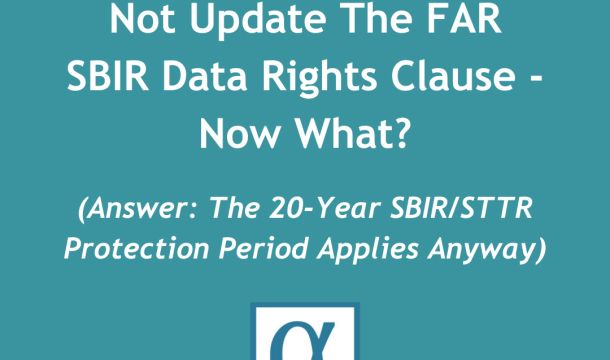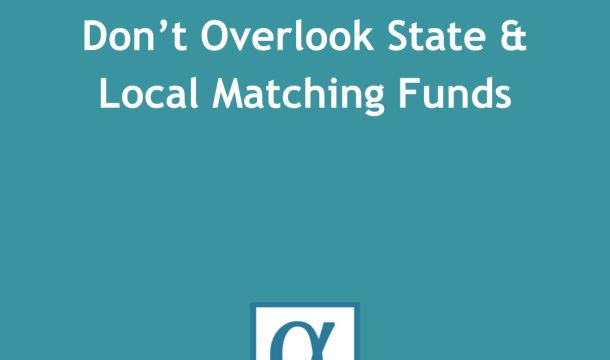The GovCon Bulletin™
The SBA’s 2022 Proposed Rule Changes - Part 5: Changes To Rules On Joint Venturer Affiliation And Contract Bids By Joint Venturers
Limitations On Joint Venturer Contract Bids
The Proposed Rule amends the SBA’s 8(a) Business Development program regulation at 13 CFR 124.513, which describes the circumstances in which a joint venture can be awarded an 8(a) contract. In particular, the Proposed Rule adds a paragraph to the regulation stating that an 8(a) program participant cannot be a joint venture partner on more than one joint venture that submits an offer for a specific 8(a) contract. For the sake of consistency, the Proposed Rule also amends the regulations for the SBA’s HUBZone, WOSB, and SDVOSB programs in order to impose a similar prohibition against a program participant being a joint venture partner on more than one joint venture that submits a bid for a HUBZone, WOSB or SDVOSB contract, respectively.
The SBA also seeks comments on whether the prohibitions should apply only to 8(a), HUBZone, WOSB, and SDVOSB multiple award contracts or whether it should apply to all 8(a), HUBZone, WOSB, and SDVOSB set-aside contracts or orders.
Changes To Joint Venturer Affiliation Rules
Under the SBA’s rules, when companies are considered to be affiliates of each other, all of their revenues and employee numbers are aggregated for purposes of determining whether any one of them is considered a small business. In some instances, therefore, a finding of affiliation with another business can cause an otherwise small business to cross over a small business size standard and no longer be eligible for contracts or orders set aside for small businesses.
The SBA’s regulation under 13 CFR 121.103 sets out the different circumstances in which the SBA will find companies to be affiliated with each other. One of the circumstances in which companies may be deemed to be affiliated by the SBA is when companies have entered into a joint venture arrangement. Paragraph (h) of 13 CFR 121.103, titled “Affiliation based on joint ventures,” addresses issues related to affiliation of joint venture partners. As recently as 2020, 13 CFR 121.103(h) stated plainly that, except for joint ventures comprised of small businesses and joint ventures comprised of protégés and mentors, companies that submit bids as joint venturers “are affiliated” with each other during the performance of any awarded contract. This explicit acknowledgment of the SBA’s position on joint venturer affiliation was inexplicably removed from the regulation in 2020. Nevertheless, the text of 13 CFR 121.103(h) suggests that the SBA’s view has not changed. Indeed, it seems improbable that the SBA would not deem joint venture partners of a joint venture bidding on a small business contract affiliated if, for example, the joint venture included a large business partner that was not a mentor under the SBA’s mentor-protégé program.
In any event, the Proposed Rule now makes important changes and clarifications to the joint venturer affiliation rules under 13 CFR 121.103(h).
Paragraph (h) Is Broken Out
In its current form, the introductory paragraph to 13 CFR 121.103(h) is long and somewhat disjointed and collects a myriad of rules related to joint ventures into what the SBA believes is an overly complex paragraph. Consequently, the Proposed Rule breaks up several of the requirements in the introductory paragraph (h) into separate paragraphs.
Two-Year Restriction On Contract Awards
The Proposed Rule codifies an SBA policy regarding the number of contract awards that can be made to a joint venture. Currently, under 13 CFR 121.103(h), a joint venture cannot be awarded contracts after the end of a two-year period that starts on the date of the first contract award without the joint venture partners being deemed affiliated, except that a joint venture may be awarded contracts after that two-year period as long as it submitted the offer prior to the end of that two-year period.
Notwithstanding the regulation, the SBA maintained a policy permitting orders under contracts that were awarded during the two-year period to be issued after the two-year period. The SBA reasoned that the two-year restriction under the regulation is on the award of additional contracts to the joint venture and not on continued performance on contracts that were already awarded.
In language that has been added to 13 CFR 121.103(h), the Proposed Rule now captures this policy on the issuance of orders after the two-year period.
Populated Joint Ventures
The Proposed Rule also clarifies rules on populated and unpopulated joint ventures. Currently, under 13 CFR 121.103(h), when a joint venture is formed as a separate legal entity, the joint venture may not be populated with its own employees who are intended to perform under contracts awarded to the joint venture. Although not stated expressly in the regulation, the partners to a joint venture that violates this prohibition presumably are deemed affiliated.
The Proposed Rule now clarifies that the prohibition against populated joint ventures that are organized as separate legal entities only applies in the context of contracts that are set aside or reserved for small businesses (i.e., small business, 8(a), WOSB, HubZone, and SDOSB contracts.) As the SBA explained in the preamble to the Proposed Rule, the prohibition against populated joint ventures was initially implemented in the joint venturer affiliation regulation in order to permit the SBA and agencies to more easily track work done by joint venture partners to ensure that a lead small business partner actually performs a significant portion of a small business set-aside contract that is awarded to the joint venture. In the absence of the prohibition, a large business partner could populate a joint venture with its employees and deprive the small business partner of any real benefits from an awarded small business contract.
The Proposed Rule, thus, adds language in paragraph (h) clarifying that a populated joint venture can be awarded a small business set-aside contract when each of the partners to the joint venture is similarly situated - e.g., when all partners of a joint venture targeting a HUBZone contract are certified HUBZone small businesses.
The Proposed Rule adds further language stating that in determining the size of a populated joint venture, the SBA will aggregate the revenues and employees of all the partners to the joint venture.
Ostensible Subcontractor Rule
The Proposed Rule revises the “Ostensible Subcontractor Rule” set forth in what is now re-designated as 13 CFR 121.103(h)(3). Currently, under the Ostensible Subcontractor Rule, an ostensible subcontractor is either (i) a subcontractor that is not similarly situated with the prime contractor and that performs primary and vital requirements of a contract or of an order, or (ii) a subcontractor upon which the prime contractor is unusually reliant.
The Proposed Rule amends the regulation to further state that as long as each business is small under the NAICS code assigned to the contract (or the prime contractor is small and the subcontractor is the SBA-approved mentor to the prime contractor), then the ostensible subcontractor arrangement will be considered a small business.
Currently, the regulation at 13 CFR 121.103(h)(3), as re-designated, states that, for purposes of determining the existence of an ostensible subcontractor relationship, all aspects of the relationship between the prime contractor and subcontractor are considered, including the terms of the proposal, agreements between the prime and subcontractor, and whether the subcontractor is the incumbent contractor and is ineligible to submit a proposal because it exceeds the applicable size standard for that solicitation.
As amended by the Proposed Rule, the regulation identifies another area of potential inquiry - namely, whether the prime contractor relies on the subcontractor's experience because it lacks relevance experience of its own.
Lastly, the Proposed Rule clarifies how the Ostensible Subcontractor Rule should apply to general construction contracts. General construction contracts routinely involve subcontractors with specialized experience in the specialty construction trades, and the primary role of a prime contractor typically is to superintend, manage, and schedule the work, including coordinating the work of various subcontractors. The SBA recognized that subcontractors often perform the majority of the actual construction work because the prime contractor frequently must engage multiple subcontractors specializing in a variety of trades and disciplines.
Consequently, the Proposed Rule adds a provision stating that in a general construction contract, the primary and vital requirements of the contract are the management and oversight of the project, not the actual construction or specialty trade construction work performed.
Allocation of Receipts of A Populated Joint Venture
The Proposed Rule clarifies how joint venture revenues are to be allocated to joint venture partners when a joint venture hires individuals to perform on a contract - i.e., the joint venture is a populated joint venture. Currently, the SBA regulation at 13 CFR 121.103(h)(4), as re-designated, generally requires a business to calculate its own business size by including in its receipts its share of receipts from any joint venture that it is a partner in. Under the SBA’s rules, a joint venture partner’s share of joint venture receipts is the same percentage as the joint venture partner’s share of the work performed by the joint venture. However, a joint venture partner of a populated joint venture does not perform any percentage of a contract awarded to the joint venture (since the work is performed by employees hired by the populated joint venture.)
Consequently, as amended by the Proposed Rule, re-designated 13 CFR 121.103(h)(4) requires revenues in a populated joint venture to be divided according to the same percentage as the joint venture partner's percentage ownership share in the joint venture.



